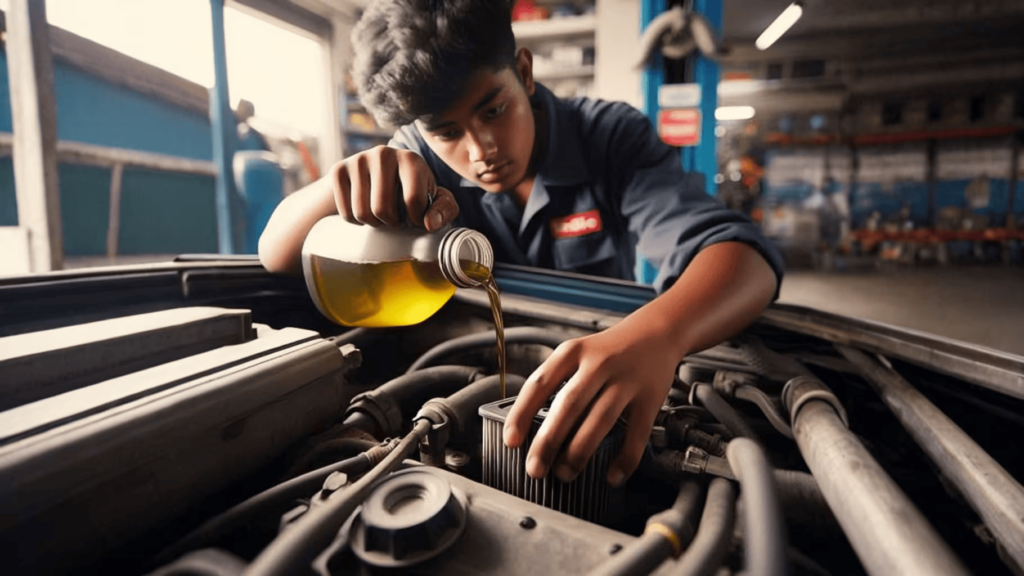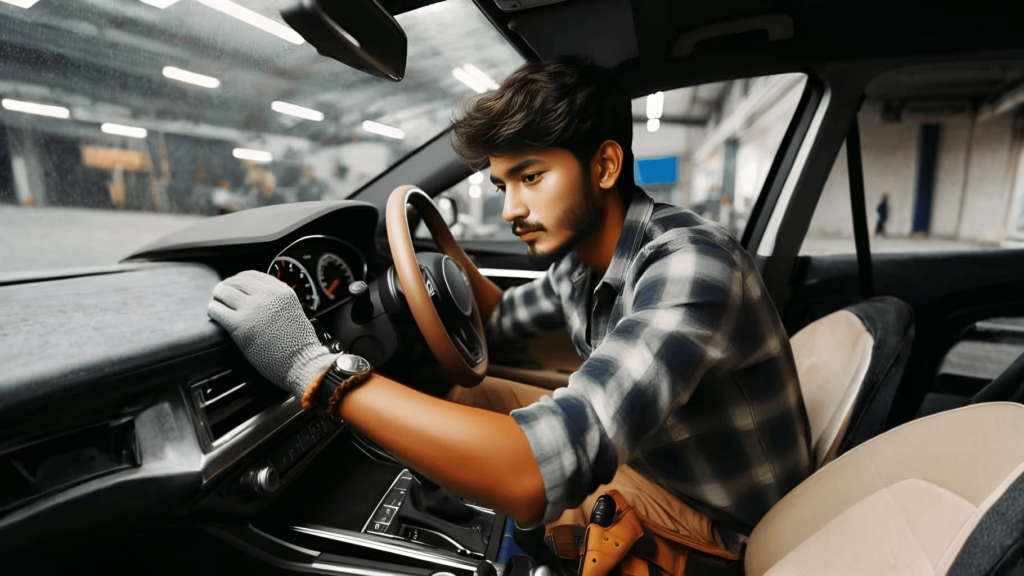Maintaining Older Vehicles in Nepal: 8 Tips to Keep Your Vehicle Road-Ready
Nepal’s breathtaking but rugged terrain presents tough challenges for car owners—especially those using older vehicles. From muddy roads in the Terai to steep inclines in the Himalayas, maintaining older vehicles in Nepal requires more than just routine check-ups. This guide outlines practical tips to extend the life and reliability of your aging vehicle in Nepal’s demanding conditions.
1. Regular Engine Checks Are Essential
Older engines are prone to wear and tear, especially in high-altitude or dusty areas like Kathmandu or Pokhara. Ensure you check:
Oil levels and quality every 3,000–5,000 km. Use engine oil suitable for the vehicle’s age.
Coolant levels, particularly before driving through hilly areas where engines are more likely to overheat.
Inspect for oil leaks or unusual smoke from the exhaust, which can signal aging engine seals or cylinder issues.

Tip: For older petrol engines, using a fuel system cleaner every few thousand kilometers can help clean clogged injectors.
2. Protect Against Monsoon Damage
Monsoon season in Nepal often leads to waterlogged roads and potholes. These can severely affect the undercarriage and electrical systems of older vehicles.
Apply underbody anti-rust coating annually.
Check for loose or exposed wiring after heavy rains.
Clean your car’s undercarriage at least once a month during monsoon season to avoid mud and salt buildup.
Tip: Avoid parking on grass or dirt during monsoon; the moisture from the ground can rust your vehicle’s frame faster.
3. Tires and Suspension Should Be Top Priority
Nepali roads—especially in rural or hilly areas—can wreak havoc on tires and suspension.
Check tire air pressure weekly; underinflated tires wear out faster.
Inspect tire tread depth—worn-out tires can lead to accidents during rain or on loose gravel.
Replace shocks and struts every 40,000 to 60,000 km, depending on terrain.
Tip: Always carry a portable air compressor and jack. They’re lifesavers during roadside emergencies.
4. Brake Maintenance Is Non-Negotiable
Older braking systems tend to lose efficiency. Given Nepal’s steep slopes and unpredictable traffic, reliable brakes are a must.
Replace brake pads every 25,000–30,000 km.
Regularly check for brake fluid leaks and soft pedals.
During long descents, downshift instead of constant braking to avoid overheating your brake system.
Tip: Upgrade to ceramic brake pads if your vehicle supports it—they last longer and perform better in heat.
5. Watch the Battery in Cold and Wet Seasons
Battery issues are common in Nepal’s colder hill stations. Older batteries drain faster in freezing weather or high humidity.
Test your battery voltage regularly, especially before winter.
Clean corrosion around the terminals using baking soda and water.
Avoid short trips—these don’t give the alternator enough time to recharge the battery.
Tip: Carry jumper cables or a portable jump starter in your vehicle—especially during winter drives to places like Nagarkot or Dhulikhel.
6. Upgrade the Lighting System for Rural Roads
If you frequently travel at night, especially in remote areas, your stock headlamps may not be sufficient.
Upgrade to LED or HID headlights for better visibility.
Install fog lights if you’re driving in regions prone to dense fog like Chitwan or Palpa.
Regularly clean headlamp covers—they often get foggy or yellowed with age.
Tip: Don’t forget to align your headlights properly to avoid blinding oncoming drivers.
7. Choose a Mechanic Who Understands Nepal’s Conditions
Find a mechanic who has experience with older models and knows how to work with Nepal’s specific fuel, road, and climate issues.
Stick to one reliable service center if possible—they’ll maintain a history of your vehicle.
Ask for locally available replacement parts to avoid delays and unnecessary expenses.
Tip: Build a good relationship with your mechanic—they can help source rare parts and provide honest maintenance advice.
8. Use High-Quality Fuel and Filters
Fuel quality can vary widely in Nepal. Older engines are more sensitive to bad fuel.
Use high-octane petrol or diesel from trusted brands whenever possible.
Replace the fuel filter every 20,000–30,000 km.
Clean the air filter more frequently if you drive in dusty regions.
Tip: Keep a spare fuel filter in your trunk if you’re traveling long distances.
Final Thoughts
Owning an older vehicle in Nepal doesn’t have to be a burden. With regular maintenance, practical upgrades, and preventive care, you can continue to enjoy reliable rides—whether you’re navigating Kathmandu’s traffic, climbing Mustang’s steep trails, or cruising through Terai’s highways.
Remember, it’s not always about having the newest vehicle—it’s about taking care of what you have.




